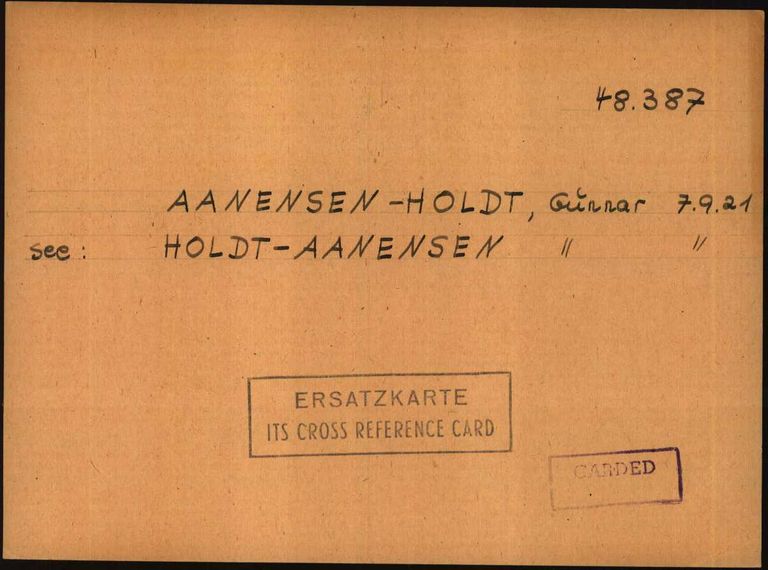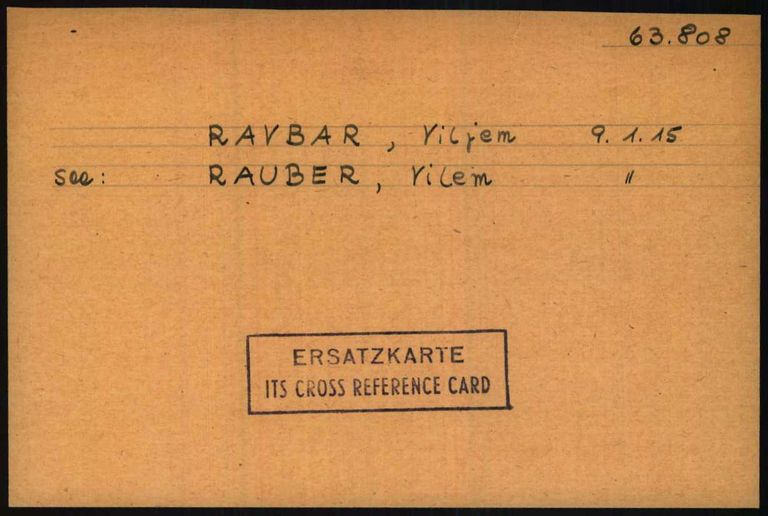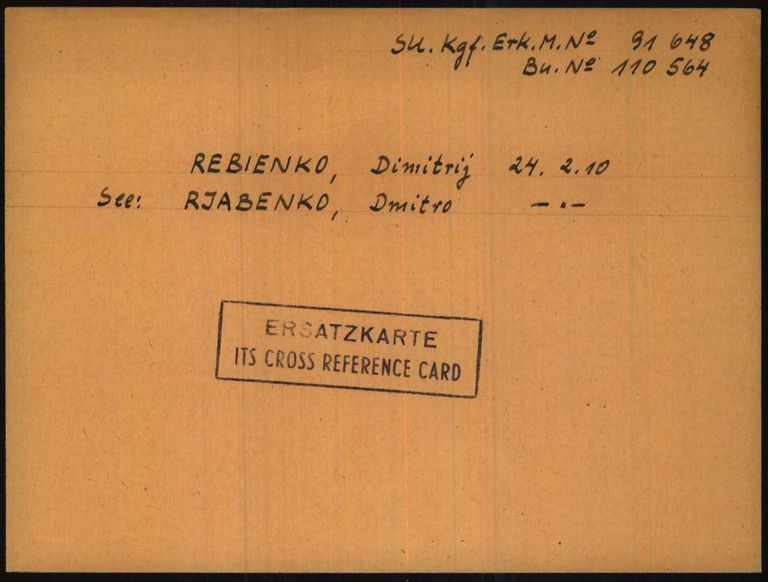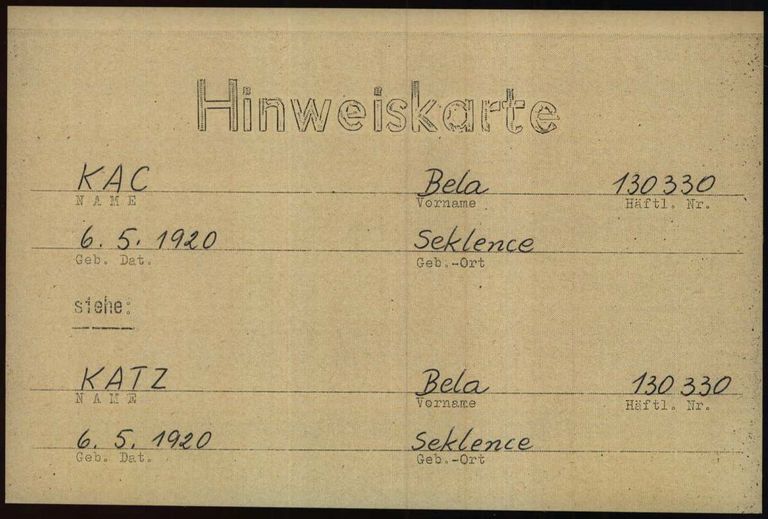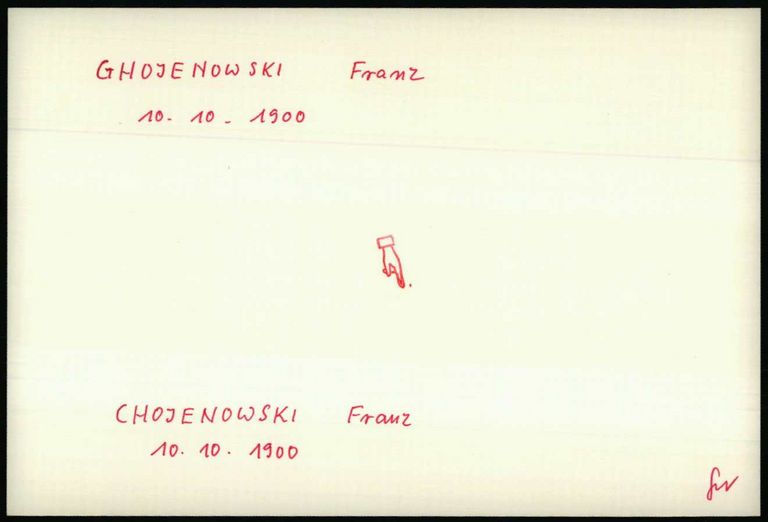Page of
Page/
- Reference
- Intro
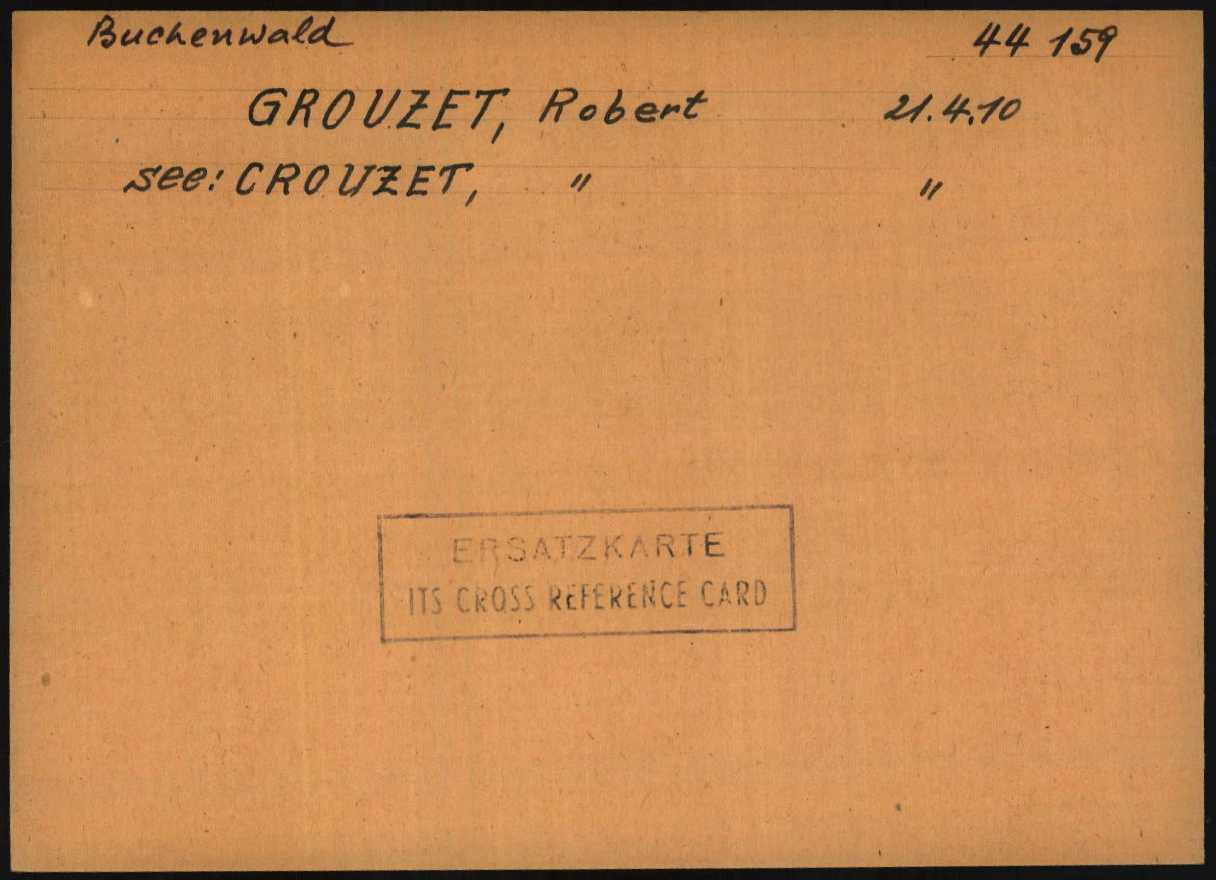

This is a cross-reference card created by ITS employees after the war. These ITS cross-reference cards were created as aids for finding documents in alphabetically ordered card files, even if the name of the person on the card was spelled differently elsewhere. Written names could include mistakes such as transposed letters, swapped double names and incorrect spellings of non-German first or last names. Some of these cards may also have prisoner numbers or other registration numbers on them, or they may indicate the collection in which the document can be found at the Arolsen Archives.
This is a cross-reference card created by ITS employees after the war. These ITS cross-reference cards were created as aids for finding documents in alphabetically ordered card files, even if the name of the person on the card was spelled differently elsewhere. Written names could include mistakes such as transposed letters, swapped double names and incorrect spellings of non-German first or last names. Some of these cards may also have prisoner numbers or other registration numbers on them, or they may indicate the collection in which the document can be found at the Arolsen Archives.
Questions and answers
-
Where was the document used and who created it?
Cross-reference cards – also known as Ersatzkarten (“substitute cards”) – were created by ITS employees as aids for finding documents with names spelled in different ways within a collection. Concentration camp documents relating to a single person were collected in alphabetically ordered individual document envelopes at the ITS. If an envelope contained a document where the person’s name was spelled differently than on the envelope itself, a cross-reference card was created and filed alphabetically among the envelopes. This card shows the different spellings as well as how the name is spelled on the envelope. Cross-reference cards are simple, yellowish-brown cards with lines drawn on them with a ruler. Information about the respective person can be found in the middle of the card or at the top edge.
- When was the document used?
Cross-reference cards were created after World War II to simplify the process of searching for documents in the ITS archive – which for a long time was a manual process. The earliest existing cross-reference cards come from the period between 1948 and 1951. These cards continued to be created into the 2000s. Now that all of the collections have been digitized, this is no longer necessary.
- What was the document used for?
When prisoners were registered in a concentration camp, their names could easily be misspelled. This happened particularly often with Central and Eastern European names, which were written down by Germans on file cards. But even German and Western European names were sometimes spelled in different ways on different documents. This could be the case with double names or abbreviations such as v. for “von” or “van.” In other cases, cross-reference cards were created for double names that had been switched around (Aanensen-Holdt can be found under Holdt-Aanensen, for example), different spellings of names pronounced the same way (Grouzet can be found under Crouzet) or missing letters (Kielszek can be found under Kieliszek). Sometimes more than one letter in a name is different, as in the case of Samuil Rebenjuk, whose envelope was filed under Samuil Gribinik, and Adalbert Rebenda, whose documents can be found under Vojteck Rebenda. These appear to be very different names at first glance, but the documents were filed together based on identical dates of birth and prisoner numbers.
- How common is the document?
These cards are very common in the Arolsen Archives, and they reflect the challenges that arise in searching for a person or a document, since there were many different ways of writing and sorting names. In the individual documents for male prisoners from Buchenwald alone – a collection with around 290,000 envelopes – there are nearly 68,600 cross-reference cards; for female Buchenwald prisoners, there are over 10,800 cards for around 40,000 envelopes.
- What should be considered when working with the document?
Cross-reference cards are a finding aid developed by ITS employees. They are not historical documents from the concentration camps.
If you have any additional information about this document or any other documents described in the e-Guide, we would appreciate it very much if you could send your feedback to eguide@arolsen-archives.org. The document descriptions are updated regularly – and the best way for us to do this is by incorporating the knowledge you share with us.
Variations
Help for documents
About the scan of this document <br> Markings on scan <br> Questions and answers about the document <br> More sample cards <br> Variants of the document
